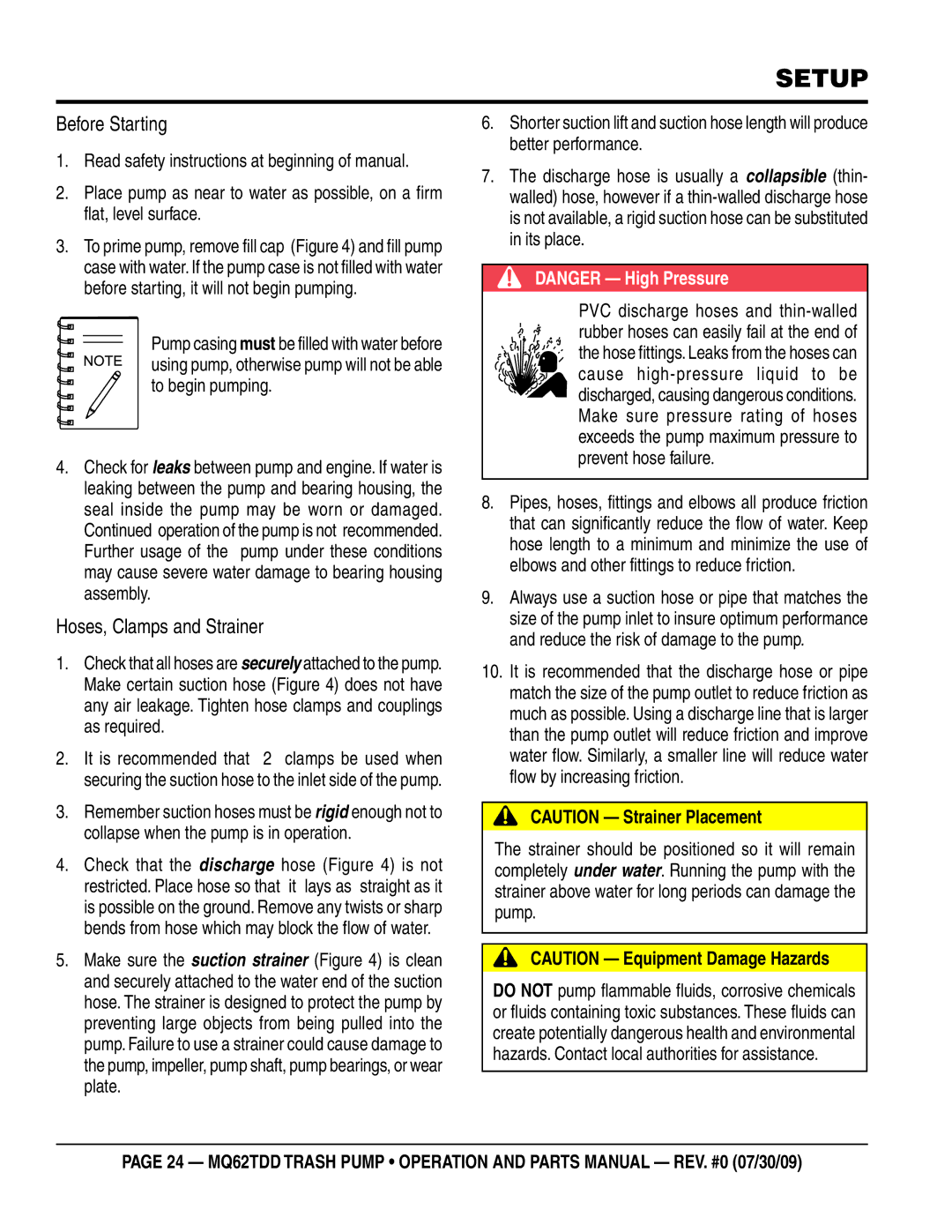MQ62TDD specifications
The Multiquip MQ62TDD is a robust engine-driven compressor designed to deliver exceptional performance and reliability in challenging job site conditions. This portable unit is engineered for a wide range of applications, including construction, HVAC, and industrial use. With its powerful engine and user-friendly features, the MQ62TDD stands out as an ideal choice for contractors needing dependable air supply on the go.One of the primary features of the MQ62TDD is its impressive air output. The unit boasts a maximum air flow rate of up to 62 CFM, allowing it to power multiple pneumatic tools simultaneously. Whether you are operating jackhammers, nail guns, or air impact wrenches, the MQ62TDD ensures consistent and sufficient air pressure to keep your projects moving efficiently.
The MQ62TDD is equipped with a 9-horsepower Honda engine, providing the necessary power to drive the compressor. Honda engines are renowned for their durability and fuel efficiency, and this model is no exception. With an extended run time due to its large fuel tank, the MQ62TDD minimizes downtime, which can be crucial in time-sensitive projects.
In terms of technological advancements, the MQ62TDD features an advanced cooling system designed to keep the compressor operating at optimal temperatures, thus extending the lifespan of the unit. The unit’s lightweight design, combined with a sturdy frame, makes transportation on site straightforward. The integrated handle and collapsible wheels facilitate easy maneuverability, ensuring that the compressor can be relocated without hassle.
Safety is also a priority with the Multiquip MQ62TDD. The unit is designed with protective features such as a low oil shutdown mechanism, which helps to prevent engine damage by automatically turning off if the oil level gets too low. Additionally, the compressor features sound-dampening technology that significantly reduces noise levels, making it ideal for use in noise-sensitive environments.
Overall, the Multiquip MQ62TDD compressor is a versatile, durable, and user-friendly tool that meets the demands of professional contractors. With its high air output, reliable power source, advanced technologies, and safety features, it provides the efficiency and performance needed to tackle any job with confidence.

